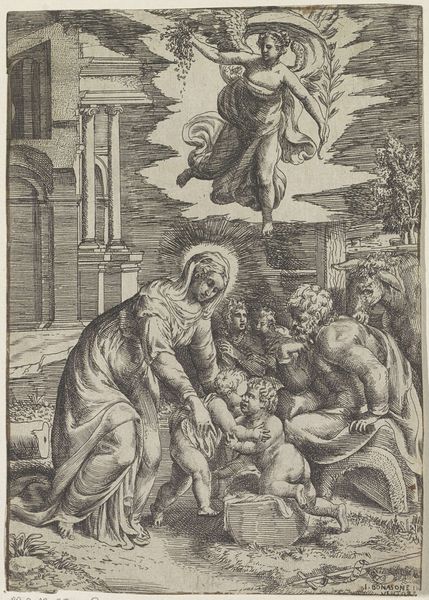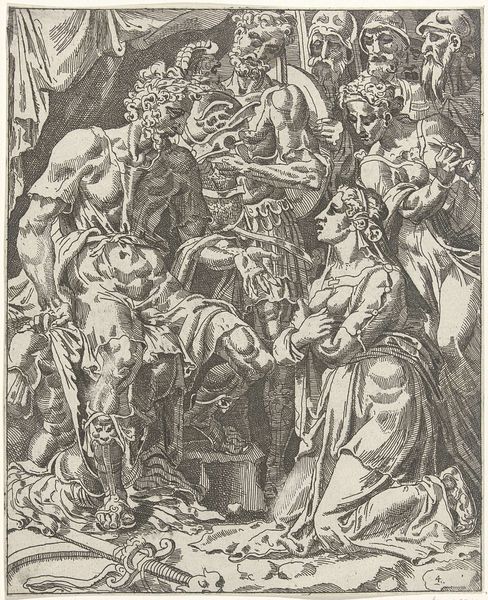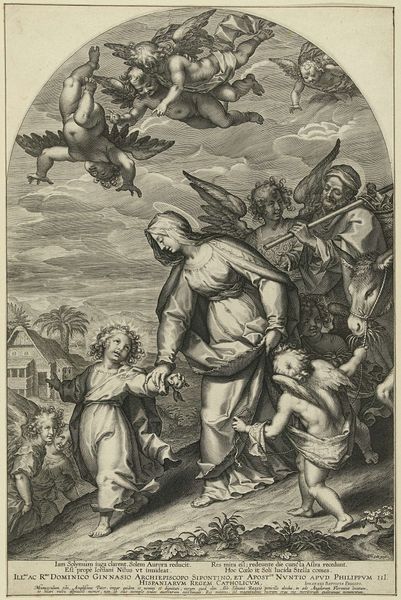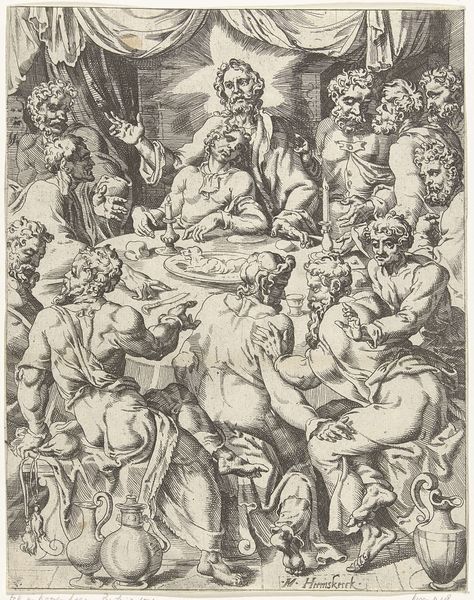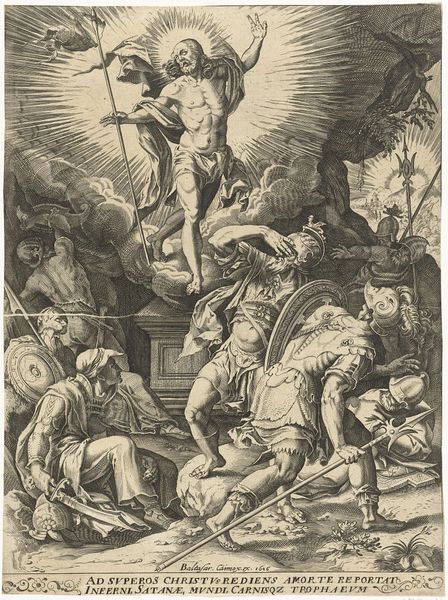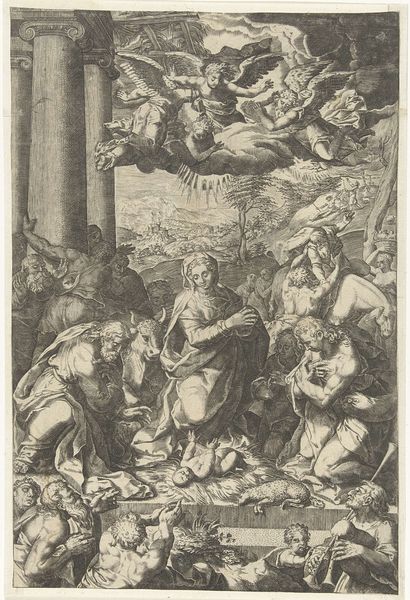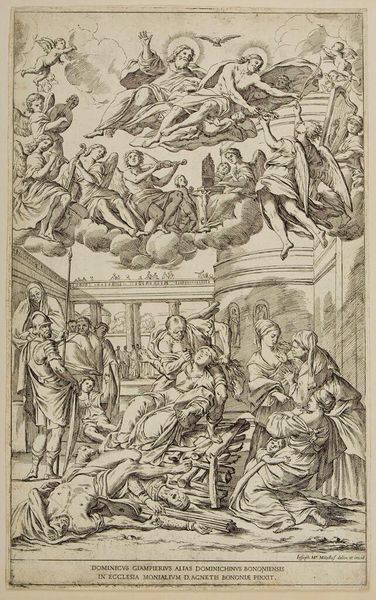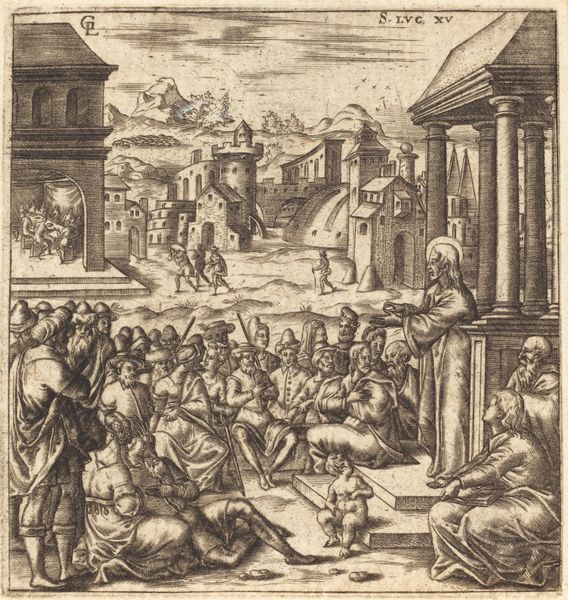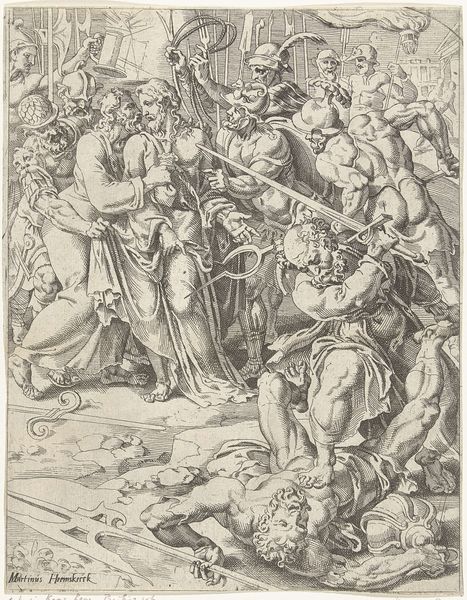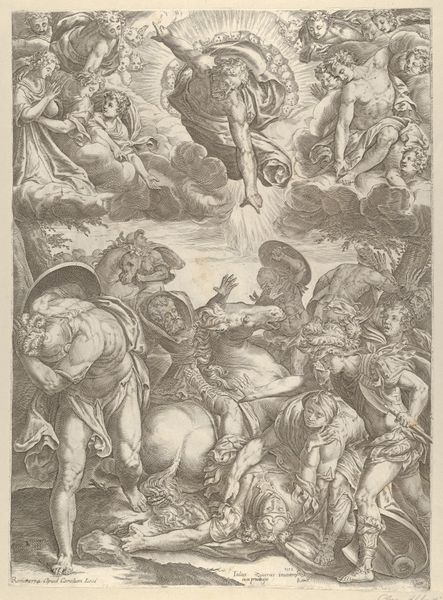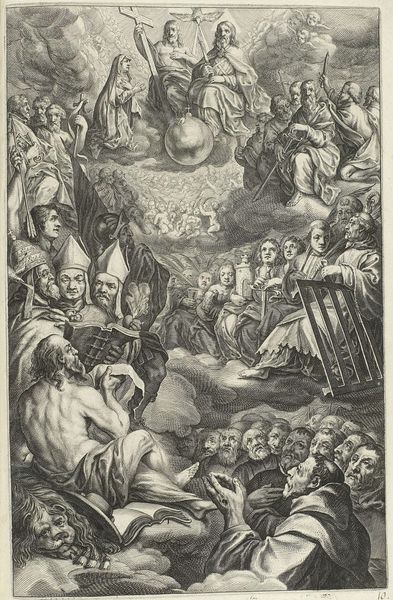
print, engraving
#
narrative-art
#
baroque
#
pen drawing
# print
#
figuration
#
form
#
pen-ink sketch
#
line
#
history-painting
#
engraving
Dimensions: height 239 mm, width 187 mm
Copyright: Rijks Museum: Open Domain
Curator: Welcome to the Rijksmuseum. We're standing before "Adoration of the Shepherds", an engraving dating from between 1614 and 1652, attributed to Crispijn van den Queborn. Editor: It has such a delicate yet profound feel. It’s the classic scene—the holy family surrounded by humble onlookers, but something in the angels swirling above, almost crowded in their heavenly mass, strikes me as unique. Curator: Note the artist’s reliance on line and tone. Every mark, every crosshatch meticulously placed; you see how Queborn’s printing relies upon craft. We also should consider the historical implications of such an accessible artwork; reproduced and distributed as a print, allowing widespread access to a religious narrative. Editor: Precisely. Look how the beams of light emanate from the Christ child, how the artist draws your eye directly to the focal point. It’s almost theatrically baroque in its employment of visual cues and symbolism. And those putti are no accident! Symbols of divine love and innocence, but there’s something kinetic and less sentimental to their gathering presence above this humble scene of adoration. Curator: The question of its initial function matters, doesn’t it? Was this print primarily devotional, aimed at personal contemplation? Or could it be related to wider, commercial, social practices involving gifting, collecting prints, circulating religious imagery at that time? Think of it as reproducible image labor! Editor: A fascinating perspective, but consider how that interpretation doesn’t diminish, perhaps even enhances, the visual literacy present. How even through mass production, cultural values were embedded within these readily circulated images. Consider the oxen—a symbol of patience and service—and the sleeping dog at the foot of Mary, fidelity and protection. Curator: I suppose that by seeing these prints circulate, even in that act, one finds a trace of production... someone made these impressions, somebody distributed the impressions...it gets interesting to view those material practices alongside an examination of symbolic meanings. Editor: Right, the way Queborn composes this scene certainly evokes a shared sense of reverence and reflection. Thank you for elucidating some further historical context of print-making during this time, which gives additional perspective on the layers of symbolic meaning.
Comments
No comments
Be the first to comment and join the conversation on the ultimate creative platform.
